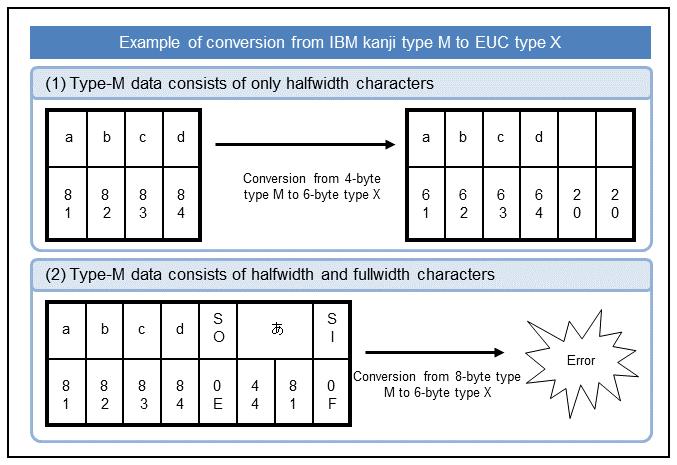Notes on conversion from type M to type X (from EBCDIC halfwidth characters to ASCII halfwidth characters)

Figure 9.13 Conversion from type M to type X (from EBCDIC halfwidth characters to ASCII halfwidth characters)
- Case (1):
-
The halfwidth characters in the input data are converted to the codes of the encoding on the output side. In this example, EBCDIC halfwidth characters are converted to ASCII halfwidth characters. Also, as in the example, if the output area is larger than the actual output data size, the data is padded with halfwidth spaces.
- Case (2):
-
In the conversion from type M to type X, if the input data contains a fullwidth character, a conversion error is generated. If the input data is EBCDIC kanji code type, an error occurs when the start of the shift code is detected.
In this example, EBCDIC Code Set on the input side is set to Japan (Latin) Extended for IBM.
If the input data of EBCDIC kanji code type does not contain a shift code, in the conversion from type M to type X, all input data is regarded as 1-byte codes for conversion.